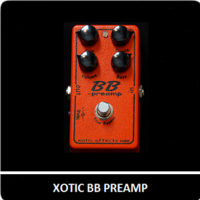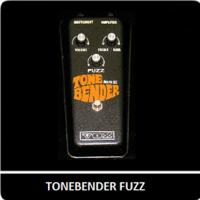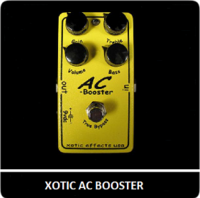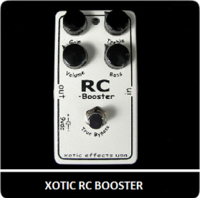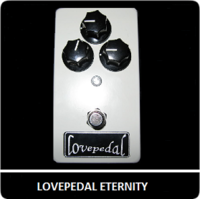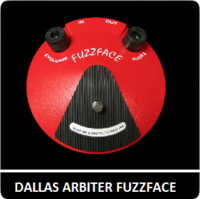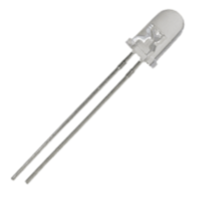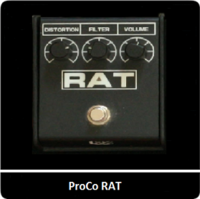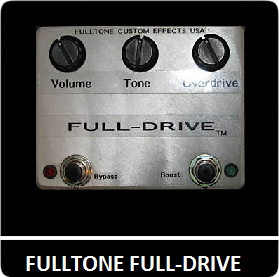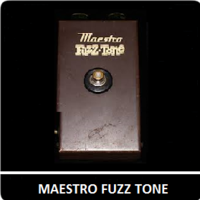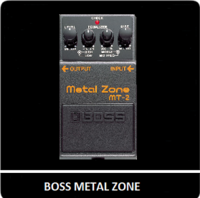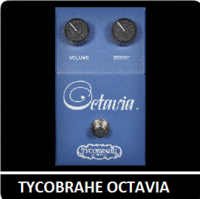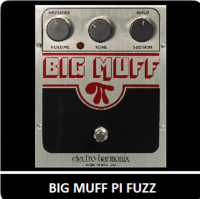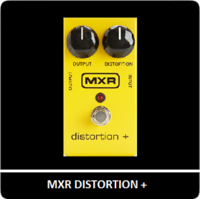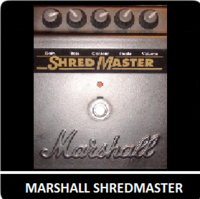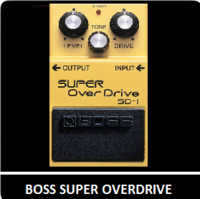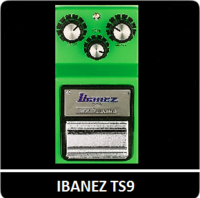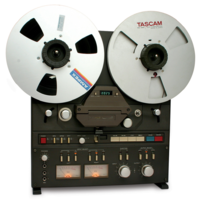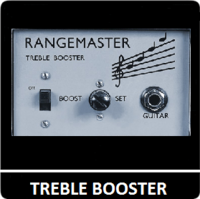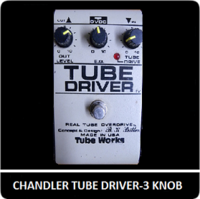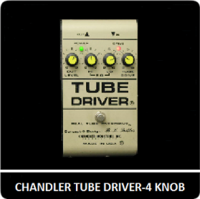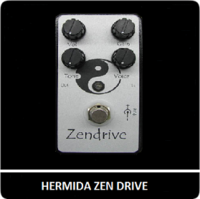October 2024: Fractal Audio's VP4 Virtual Pedalboard has been added to the wiki.
Difference between revisions of "Drive block"
Jump to navigation
Jump to search
m |
|||
| Line 1: | Line 1: | ||
| − | + | Forum member CBoothe01 contributed to this page. | |
=Drive: supported by which Fractal Audio products?= | =Drive: supported by which Fractal Audio products?= | ||
Revision as of 11:52, 3 January 2017
Forum member CBoothe01 contributed to this page.
Contents
- 1 Drive: supported by which Fractal Audio products?
- 2 Drives and X/Y switching
- 3 Drives and CPU usage
- 4 Knobs on real pedals versus virtual knobs
- 5 Fuzz types and buffers/impedance
- 6 Drive models based on the Tubescreamer circuit
- 7 Using a Drive block for tighter tones
- 8 Turning an Amp block into a Drive (Axe-Fx II only)
- 9 Pictures of the modeled pedals (by MDProd)
- 10 Parameter: Mix
- 11 Parameter: Sample Rate Deduction
- 12 Parameter: Slew Rate
- 13 Recreating other pedals
- 14 Drive models
- 14.1 BB Pre (based on Xotic BB preamp)
- 14.2 Bender Fuzz (based on Sola Sound Tone Bender)
- 14.3 Bit Crusher
- 14.4 Blues OD (based on Marshall Bluesbreaker)
- 14.5 Esoteric ACB
- 14.6 Esoteric RCB
- 14.7 Eternal Love (not G3'd yet)
- 14.8 Face Fuzz
- 14.9 FAS Boost
- 14.10 FAS LED-Drive
- 14.11 Fat Rat
- 14.12 FET Boost
- 14.13 FET Preamp
- 14.14 Full OD
- 14.15 Hard Fuzz
- 14.16 Master Fuzz (not G3'd yet)
- 14.17 Micro Boost
- 14.18 Mid Boost
- 14.19 M-Zone Dist (not G3'd yet)
- 14.20 Octave Dist
- 14.21 Pi Fuzz
- 14.22 Plus Dist
- 14.23 Rat Dist
- 14.24 Ruckus
- 14.25 SDD Preamp
- 14.26 Shred Dist
- 14.27 Super OD
- 14.28 T808 MOD
- 14.29 T808 OD
- 14.30 Tape Dist
- 14.31 Timothy
- 14.32 Treb Boost
- 14.33 Tube Drv 3-knob (not G3'd yet)
- 14.34 Tube Drv 4-knob
- 14.35 Zen Master
Drive: supported by which Fractal Audio products?
- Axe-Fx II: yes.
- AX8: yes.
- FX8: yes.
Drives and X/Y switching
- The two Drive blocks in the Axe-Fx II, FX8 and AX8 support X/Y switching.
Drives and CPU usage
- If CPU load is an issue, take note which Drive type you select. Some types, such as Face Fuzz, use up to 4% more CPU than other types.
- CPU usage is amplitude dependent. CPU usage will change when you hit the strings when one or more Drive blocks exist in the preset (bypassed or engaged).
Knobs on real pedals versus virtual knobs
- If the original pedal has a single Tone knob, use the Tone control in the model for authentic results.
- If the original pedal has EQ controls (Bass / Mid / Treble), use the EQ controls in the model for authentic results.
- Cliff's comments:
- "The Tone control works the same as the modeled pedal. The Bass, Mid and Treble controls are a generic EQ that can be used in addition to the Tone control to further shape the sound." source
Fuzz types and buffers/impedance
- Cliff: "The Fuzz in the Axe-Fx reacts as though there is a buffer in front of it (because there is). It's a limitation inherent to all modeling products. I modeled it using a nominal source resistance. I forget what I used for the source resistance but it was probably around 100K ohms. To really simulate it you would need a controller to simulate the changing output impedance of the guitar." source
Drive models based on the Tubescreamer circuit
- Models based on the Tubescreamer circuit: (source)
- T808.
- T808 Mod.
- Super OD.
- Full OD.
- BB Pre.
- Eternal Love.
- Zen Master.
- LED Drive.
Using a Drive block for tighter tones
- Put a Drive block before the Amp block, with minimal Gain and maximum Level. Turn down the Drive in the Amp block. This makes the bass tighter. This works well in particular with Tubescreamer-based Drive types.
- Alternatively use a PEQ and copy and paste the HiCut and LowCut frequencies from the Drive block. This will apply the same EQ-ing but without the gain and toll on CPU.
Turning an Amp block into a Drive (Axe-Fx II only)
- Insert a 2nd Amp block before the main Amp block, set its Supply SAG to zero ("p.a. off") to switch off power simulation, set Presence/HiCut to neutral ("5"), and you made yourself yourself a virtual preamp pedal. Set the main Amp block to a fairly clean tone for best results. Works great with the Euro Blue/Red/Uber and 5153 amp types.
- Sources:
Pictures of the modeled pedals (by MDProd)
Parameter: Mix
- Mix at 0% in a Drive block is not equivalent to "true bypass" (100% dry signal). Also, the Mix control operates prior to any tone control. This lets you mix some dry in with the distorted signal but still maintain overall tone control. Some people like turning down the effects’s Mix level to 80% or lower to increase transparancy and decrease buzziness.
- Cliff's comments:
- "The models let clean through even with the mix at 100%. It depends on the diodes though as to how much clean is mixed. Our models are based on the most common versions." source
Parameter: Sample Rate Deduction
- Use Sample Rate Reduction for intentional aliasing to create creative effects.
Parameter: Slew Rate
Recreating other pedals
- Klon Centaur:
- Currently there's no model of the Klon Centaur boost/overdrive pedal. Here are some guidelines to approach its sound:
- Using the FET Boost:
- Drive: 5-6
- Tone: 4-5
- Level: 5-7
- Clip Type: Si Diode
- High Cut: 6500
- Mid: 1.00
- Using a PEQ:
- band 1: Shelving2, 150 Hz, 0.707, -12
- band 2: -
- band 3: -
- band 4: -
- band 5: Shelving2, 2253 Hz, 0.707, -12
- Level 1.5
- Emulating the Solo Dallas Schaffer. More information
- Emulating a Maxon OD808.
Drive models
BB Pre (based on Xotic BB preamp)
- Based on: Xotic BB preamp, an overdrive pedal made famous by Andy Timmons.
- Original controls: Gain, Volume, Bass, Treble.
- Xotic Effects Website and videos: "The BB Preamp offers a wide variety of sounds. It's capable of a 30dB+ clean boost with an adjustable ±15dB two band active EQ which adds a wide range of harmonic content to your ideal sound. The BB also utilizes a pre-gain stage which allows the pedal to go from a very pristine clean to a very smooth, compressed, overdriven sound."
- Videos:
- Cliff's comments:
- "Works just like the real thing here. Tons of gain, too much IMO but I didn't design it." source
Bender Fuzz (based on Sola Sound Tone Bender)
- Based on: classic Tone Bender circuit, made famous by Jimmy Page of Led Zeppelin (Whole Lotta Love). One of the first fuzz pedals to come out of England in the mid 1960s. There are numerous versions and circuits, and it has been copied and cloned by many others. Wikipedia:
- MKI: three transistor circuit, based on the Gibson Maestro Fuzz-Tone.
- MK1.5: two transistor circuit, upon which the Arbiter Fuzz Face and Vox Tone Bender are based, essentially a negative feedback amplifier.
- Professional MKII: three transistor circuit, based on the MK1.5, with an additional amplifier gain stage. Also released by Marshall as the Supa Fuzz. Probably the most popular and most-copied design.
- MKIII, MKIV: three transistor circuit with Germanium diode and a Tone control.
- Original controls: Level, Attack.
- Sola Sound / Macari's website
- Tips:
- The Tone Bender works well in front of both clean and Plexi-like overdriven amps.
- When used with high Drive values and a neck pickup (even a single coil) the Tone Bender can get real spitty. Alternatively crank its Level and then dial in Drive as desired.
- More information:
- Videos:
Bit Crusher
- So far known, not based on a particular pedal. Bitcrushing can be used to warm up a sound or to deliberately degrade a signal to create a lo-fi or "broken" sound.
- Wikipedia: "A Bitcrusher is a digital audio effect, which produces a distortion by the reduction of the resolution or bandwidth of digital audio data. The resulting quantization noise may produce a “warmer” sound impression, or a harsh one, depending on the amount of reduction. A number stored digitally has a resolution given as n bits, where there are 2^n possible values of the number. If one reduces the number of bits used to store the number, the number of possible values of the number is decreased, and thus the resolution decreases, producing quantization distortion. For example, a standard CD has a resolution of 16 bits, thus there are 216 possible values for any given part of the musical waveform. If this is reduced to approx. 8 bits, distortions can be noticed, reducing the quality. These distortions add to the original overtone in such a way that the wave shape becomes angular. This can produce a “warmer” sound impression than the original waveform, especially if the wave is rounded off in certain ways. Often this is used with techno or electronic music consciously, without regard to fidelity."
- Videos:
Blues OD (based on Marshall Bluesbreaker)
- Based on: Marshall Bluesbreaker (the pedal, not the amp). It was designed to simulate the sound of the 2x12 Marshall combo amp used by Eric Clapton in John Mayall’s Bluesbreakers. Used by John Mayer and others.
- Original controls: Gain, Tone, Volume. The later (less praised) MkII version added a Mode Switch.
- Tip: the model also works well with a bass to get it into overdrive.
- More information:
- Videos:
Esoteric ACB
- Based on: Xotic AC Booster.
- Original controls: Gain, Volume, Treble, Bass.
- Xotic Effects Website and videos.
- Website: "The Xotic AC Booster Overdrive Guitar Effects Pedal creates a warm and pleasant sound by using the finest quality parts available. The AC Booster is a natural sounding "overdrive" pedal. Not "heavy" distortion, but a sweet thick overdrive with an "open" non-compressed feel. It's capable of a 20dB+ boost with an adjustable ±15dB two band active EQ, which adds a wide range of harmonic content to your ideal sound. The super wide range gain control allows for enough gain for it to work as a distorion pedal when turned all the way up. Equipped with not only boost Gain but also Treble and Bass controls that allow you to adjust your sound anyway you like."
- Pro Guitar Shop Strat Demo.
- Pro Guitar Shop Les Paul Demo.
- The model was matched again with the real pedal in Quantum 5 firmware.
Esoteric RCB
- Based on: Xotic RC Booster.
- Original controls: Gain, Volume, Treble, Bass.
- Xotic Effects Website and videos.
- Website: "The RC Booster offers a super transparent 20db+ clean boost with an adjustable ±15dB two band active EQ that adds a wide range of harmonic content to your ideal sound. As a clean boost, it can enhance other pedals, such as "overdrive and distortion pedals," or you can crank the gain for a "crunch" sound. But, the RC Booster is so extremley transparent that many players find they leave it on all the time."
- Pro Guitar Shop Demo.
- XOTIC Guitars Demo.
- The model was matched again to the real pedal in Quantum 5 firmware.
Eternal Love (not G3'd yet)
- Based on: Lovepedal Eternity.
- Original controls: Level, Drive, Glass (treble boost).
- Lovepedal Website.
- Website: "The Lovepedal Eternity can be 3 pedals in one – Overdrive, Treble Booster and Clean booster – depending on where you set the dials. You can also blend these 3 factors. Darker tones brighter tones, etc. Unorthodox tone control. It’s a treble boost instead of a normal tone control. It is a very smooth type of OD. It can go from nothing at all to sounding like a very warm vintage overdriven tube amp or a clean flat booster or a treble booster even a tweed amp. With the treble boost all the way off, it is warmer than most tube amps. The Eternity Overdrive always stays true to what’s coming out of your guitar so you never turn into the pedal. No matter how hard you drive it. It also breaks up the harder you dig into the strings, which is priceless."
- Pro Guitar Shop Demo.
- Gearmandude Demo.
Face Fuzz
- Based on: Dallas Arbiter Fuzz Face.
- Wikipedia: "Arbiter Electronics Ltd. first issued the Fuzz Face in 1966. Later units bear the "Dallas Arbiter", "Dallas Music Industries Ltd.", "CBS/Arbiter Ltd." or "Dunlop Manufacturing Inc." name. The earliest units used germanium transistors. Silicon transistors were used in later editions of the pedal. Silicon transistors provided for a more stable operation, but have a different, harsher sound. The electronics are contained in a circular-shaped metal housing. Ivor Arbiter "got the idea for the round shape when he one day saw a microphone stand with a cast iron base". The pedal uses two knobs, one for volume, and one for the amount of "fuzz" the pedal produces. The arrangement of controls and logo on the box suggests a smiling face. The circuit is based on the shunt-series-feedback amplifier topology - a standard in engineering text books. Sola Sound and Vox had been using the same circuit topology for some of their Tone Bender pedals earlier in 1966. Dallas Music Industries made a final run of Fuzz Faces in 1976 or 1977, shortly after they had moved to the United States. The company bought Crest Audio in the 1980s and although it was operating under that name when it reissued the Fuzz Face in the 1986, the units bore the Dallas-Arbiter name. They made about 2000 Fuzz Faces until 1990. In 1993 Dunlop Manufacturing took over production, making a variety of Fuzz Faces to this day. Several germanium and silicon models are available. In 2013 smaller versions with status LEDs and AC power jacks were introduced. In the late 1990s Arbiter reissued the pedal as well."
- Original controls: Volume, Fuzz.
- Dunlop Web Page for the Fuzz Face Pedal built to Dallas Arbiter Specs.
- Dunlop Fuzz Face Manual.
- Gearmandude Strat Demo & Comparison with Dunlop FF and Dunlop Hendrix FF.
- Dunlop Fuzz Face Shoot Out With Jeorge Tripps and James Santiago.
FAS Boost
- Cleanish boost great for boosting vintage amps like Plexis.
- Cliff: "It's not based on anything. It's my take on an ideal boost pedal." source
FAS LED-Drive
- Based on: LED clipping, designed by FAS. Based on the Tubescreamer circuit.
Fat Rat
- Based on: modified Pro Co RAT. A bit fuller and smoother.
- Notes: see Pro Co RAT.
- Popular Mods:
- Resistor Mods: The Ruetz RAT mod which involves simply cutting the 47 Ω resistor to disengage half of the drive circuit. Gain is reduced somewhat and the bass is no longer attenuated. Additionally, the 560 Ω resistor controlling the lower half of the distortion filter can receive similar treatment. Either can translate to thicker (fuzzier) bass response at the expense of less distortion.
- Toggle Switches: The Mightier Mouse mod involves a 3-way switch to select between RAT 2 (clipping via op-amp only), Turbo RAT (clipping via LEDs), and MOSFET clipping modes. It also shows an alternative to the Ruetz RAT mod using a potentiometer or trimpot to replace the resistor instead of simply cutting it.
- Diode Removal: Removing one of the two silicon clipping diodes for a volume boost crunch tone.
- Chip Substitutions: The original RAT pedals featured the LM308 op-amp which is now quite expensive. Recent RAT pedals now feature the Texas Instruments OP07DP. Other op-amps that people try include the CA3130EZ (Mosfet Based) NE5535A, NE5534AP LM741 and TL071 FET-OP. Many install an IC socket to enable easy swapping of ICs, very much similar to what people do with the Ibanez Tube Screamer.
- Capacitor Mods: "softening" ceramic caps replaced with silver mica or metal film caps for better tonal fidelity. These include the 30 pF cap riding the IC chip and the single 100 pF cap.
- Robert Keeley does a popular mod involving replacement of the existing op-amp for an original LM308, a capacitor upgrade (using film and tantalum capacitors) to improve bass response and a 3-way mode switch. The first mode is the Classic RAT which is the original RAT circuit. The second mode is the Phat RAT which has an extra diode added to the original circuit in attempt to achieve a more tube-like sound. The final mode is the Mighty Mouse in which a diode is removed from the original circuit causing it to behave more like a boost pedal.
FET Boost
- Based on: a gentle, smooth clipping booster with tone controls.
- To see what FET boost pedals can accomplish, read the description of the Fulltone Fat-Boost.
FET Preamp
- Probably based on: Boss FA-1, a JFET preamp pedal made famous by The Edge.
- Original controls: Bass, Treble, Volume, Flat/Low Cut switch.
- Description on Bossarea.com
Full OD
- Based on: Fulltone Fulldrive 2.
- Original controls: Volume, Tone, Overdrive, Boost switch.
- Fulltone Website.
- Cliff's comments:
- "The Full OD model is based on a Fulltone Fulldrive 2". source
Hard Fuzz
- A hard-clipping, 60s-style fuzz.
Master Fuzz (not G3'd yet)
- Based on: Gibson Maestro Fuzz Tone FZ-1A.
- Original controls: Volume, Attack.
- YouTube demo.
- This is the fuzz used in Satisfaction by The Rolling Stones.
Micro Boost
- Based on: MXR Micro Amp Boost, a clean booster.
- Original controls: Gain.
- Website
- YouTube demo.
Mid Boost
- Custom FAS Mid Boost.
- Try this model as an alternative to the Treble Booster.
M-Zone Dist (not G3'd yet)
- Based on: Boss MT-2 Metal Zone, popular for extreme gain settings. Loved by many, hated by many.
- Original controls: Level, Distortion, Bass, Middle, Treble.
- Boss website.
- Description on Bossarea.com.
Octave Dist
- Based on: Octavia.
- Original controls: none.
- Wikipedia: "The Octavia was an effects pedal designed for Jimi Hendrix by his sound technician, Roger Mayer. It reproduces the input signal from a guitar one octave higher and/or lower in pitch, and mixes it with the original and added distortion fuzz."
- Roger Mayer website: "The OCTAVIA is probably our most famous and distinctive creation. This guitar effect was designed in early 1967 and featured on "Purple Haze" and "Fire" by Jimi. It's unique tones can also be heard on such tracks as "One Rainy Wish", "Little Miss Lover", "Little Wing", "Machine Gun" etc. The OCTAVIA produces a sound that is an octave higher than the note you are presently playing. This doubling effect is accomplished through electronic mirror imaging techniques that are program sensitive and also respond to the feedforward inputs of the player. The electronic circuitry is analogue in design and will react faithfully to all the subtleties and harmonic overtones from the guitar. The effect produced is very unique but human in quality. The unit that is manufactured today is representative of the latest evolution of Octavia that Jimi used and contains the feedforward and gating effect that my earlier evolutions lacked. The modern clones today often copy the Tycobrahe unit that in fact was a rip off of my earlier 24 volt versions. These units were not designed to work optimally with 9 volts and in fact you would be buying a clone of a copy so it makes sense to buy a unit from the man who invented it. Electronically the OCTAVIA is an analogue circuit with the properties of a frequency doubler, envelope generator and amplitude modulator with addition frequency shaping filter circuits. The effect produced is subtle to wild depending on the settings used and will respond to the attack of the player. A clean tone from the guitar with say the tone rolled control rolled off will produce "ring modulated" overtones that characterise the solo to "Who knows". The sound is tangibly different if a fuzz unit is in front of the Octavia: an upper octave double is created, clearly demonstrated in the solo to "Purple Haze". The bright harmonics are more controllable if the neck pickup is selected and the tone control set to roll off the treble. The effect really comes into it's own on the top E and B strings from the 7th fret up. A clean and precise picking style is essential with particular attention to accurate fretting techniques. Jimi placed the Octavia after a fuzz and wah unit in most cases so it would react to the combined effects of both the wah and one or more fuzz boxes. It is important to experiment with how much signal you are driving the Octavia with as this has a great influence on the sound produced."
Pi Fuzz
- Based on: Big Muff Pi fuzz.
- Original controls: Volume, Tone, Sustain (Drive).
- EHX website and video: "Hendrix and Santana were among the first to get a piece of the Pi, and for over 40 years the Big Muff Pi has been defining the sound of rock guitar. Revered by contemporary guitarists and rock legends for its rich, creamy, violin-like sustain, from Pink Floyd to The White Stripes, everyone still wants a piece of the Pi!"
- Use it with a clean amp tone.
- Information about the Big Muff.
- Cliff's comments:
- "Our model uses a shelving filter but it's not based on a Ram's Head version." source
Plus Dist
- Based on: MXR Distortion+
- Original controls: Level, Distortion.
- Website and videos: "Germanium-powered, soft-clipped distortion. Go from warm, tubey overdrive to gnarly fuzz. This little yellow box is responsible for those great distortion sounds heard on so many classic recordings. Set the Distortion control low and crank the Output knob to drive the front end of your amp for cool blues tones, or max out the Distortion knob for classic early ’80s hard rock tone. There still isn't any distortion unit on the market that sounds like the Distortion+."
- Demo
- Sounds a little fuzzy when used with a clean amp tone. Use it with a dirty amp tone.
- This model relies on the Variable Clip Type, this is by design.
- The model was matched again to the real pedal in Quantum 5 firmware.
Rat Dist
- Based on: Pro Co Rat.
- Original controls: Distortion, Filter (Tone), Volume.
- Website
- Wikipedia Page: "The Pro Co "The RAT" is a distortion pedal with a very simple circuit, based around a single op-amp, originally the Motorola LM308 (later switched to Texas Instruments OP07DP). The distortion is produced using a variable gain circuit with diodes shorting the output to ground to produce hard clipping of the input waveform. This distortion stage is followed by a passive tone filter and volume control. This is the same scheme as the Boss DS-1 distortion pedal, although there are major differences between the two circuits. A major difference is the opamp used, the LM308, known for its poor slew rate; it accounts for the sonic difference between the two pedals. The most popular RAT pedal, the RAT2, features true-bypass switching."
- Good Demo with Tele and Les Paul
- Comparison of Vintage vs Newer version
- iGuitar Demo
- The model was matched again to the real pedal in Quantum 5 firmware.
- Cliff's comments:
- "The filter knob has been modeled but it works backwards." source
Ruckus
- Based on: Suhr Riot distortion.
- Original controls: Distortion, Level, Tone, Voice (not modeled).
- Website and videos: "Riot is a versatile high-gain distortion pedal with the sonic characteristics and touch sensitivity of a high quality 100 watt tube amplifier. Riot will transform a clean amp into an authoritative rock tone that inspires all of your favorite riffs."
- The Tone control is a treble roll-off. Don't hesitate to turn it up.
- The Ruckus was designed to be used with a clean amp.
- Demo by Pete Thorn
- The model was matched again to the real pedal in Quantum 5 firmware.
SDD Preamp
- Based on: preamp in Korg's SDD-3000 digital delay, made famous by The Edge.
- Original controls: none.
- "Offers a natural reaction to individual playing styles, as well as slightly saturated and compressed tone."
- Korg website
- With Drive at around 1.50 this Drive block will add chime to any clean tone.
Shred Dist
- Based on: Marshall Shredmaster.
- Original controls: Gain, Bass, Contour (Tone), Treble, Volume.
Super OD
- Based on: Boss SD-1 Super OverDrive.
- Original controls: Level, Tone, Drive.
- Website
- Information on Bossarea.com: "The SD-1 has been around for a very long time and has gone almost unchanged from its conseption back in 1981. The pedal contains an asymmetric overdrive circuit that responds very well to the player's picking force. It produces a dynamic and smooth overdrive effect well suited to any type of rock music. The SD-1 is also popular as a booster pedal for valve amplifiers. Turn the distortion down and the level up and connect it in front of the amplifier. The higher input level will push the input valve of the amplifier harder producing more distortion from the amp itself. The SD-1 is well suited to do this because it maintains the natural tone from the guitar."
- The model was matched again to the real pedal in Quantum 5 firmware.
T808 MOD
- Based on: captures the most popular Tubescreamer overdrive mods. More bass, more gain range, more transparent.
T808 OD
- Based on: Ibanez TS9.
- One of the most famous and cloned pedals of all time, mainly because of its use by SRV.
- Original controls: Drive, Tone, Level.
- Cliff's comments:
- "The T808 drive is NOT based on the Ibanez TS-808 but rather the TS9 model." source
- Wikipedia: "The Ibanez Tube Screamer is a guitar overdrive pedal, made by Ibanez. The pedal has a characteristic mid-boosted tone popular with blues players. The "legendary" Tube Screamer has been used by guitarists such as Stevie Ray Vaughan to create their signature sound, and is one of the most popular and most copied overdrive pedal".
- The model was matched again to the real pedal in Quantum 5 firmware.
Tape Dist
- Based on: the clipping of an overdriven reel-to-reel tape deck.
- Original controls: none.
- Try the Tape Dist block AFTER the Amp block to add bite to the tone.
- Cliff's comments:
- "It's just a generic tape distortion simulator. I used an old Ampex EQ curve basically."
- "The tape drive is meant to be used anywhere in the chain. I've been using it after the amp to fatten things up and it work really well for that. Be careful though, the drive block is mono so you can get phase issues if you put it after a stereo effect."
Timothy
- Based on: Timmy pedal by Paul Cochrane. It's a transparent boost/overdrive pedal.
- Original controls: Gain (model: Drive), Volume (model: Level), Bass cut (model: Bass), Treble cut (model: Tone).
- Cliff's comments:
- Video.
Treb Boost
- Based on: Dallas Rangemaster.
- Original Controls: Boost (on/off,) Set.
- Wikipedia: "Widely used in the late 1960s and early 1970s. Hard to find today, the Rangemaster sound is still sought after, and many clones based on its extremely simple circuit have been made commercially and by hobbyists. Unlike most of today's clones, the original Rangemaster was not a pedal, but a box meant to be placed on top of the amplifier. The circuit makes use of a single OC71 or OC44 germanium transistor. One can hear the Rangemaster in many Queen songs, a good example being Procession from Queen's second album, Queen II. Tony Iommi is another Rangemaster user, and can be heard using one modified by a roadie on many Black Sabbath recordings. An alleged early user of the Rangemaster was Eric Clapton, who supposedly used one around the time of John Mayall's Blues Breakers with Eric Clapton album, in combination with a 1960 Gibson Les Paul Standard and a Marshall Bluesbreaker. This connection is often used to market modern clones of the circuit and contributed a lot to its popularity in recent years, even though there is no evidence that Clapton ever used one."
- Premier Guitar article
- Also try the Mid Boost as an alternative to Treb Boost.
- Cliff's comments:
- "Boost was a switch and engaged the effect. Set was the amount of boost and is equivalent to Drive." source
Tube Drv 3-knob (not G3'd yet)
- Based on: Tube Driver (3 knobs), a pedal that actually contained a 12AX7 tube.
- Original controls: Level, Tone, Drive.
- Website
- B.K. Butler talking about the Tube Driver: "There is NO Chandler Tube Driver… Never was a Chandler Tube Driver! They just marketed it for a while.” But I do understand the confusion caused when I allowed their name to be included on my product. My lesson was well learned… enough said." source
- Cliff's comments:
Tube Drv 4-knob
- Based on: Tube Driver (4 knobs), a pedal that actually contained a 12AX7 tube.
- Original controls: Level, Hi, Lo, Drive.
- Notes: see TUBE DRV 3-KNOB.
- Cliff's comments:
- "The idea with the 4-knob version is to use the tone controls on the EQ page and leave the single Tone knob at noon. You can still use the Tone knob if you want but the model is only accurate with the knob at noon."
- "Both of my actual pedals go silent with the Drive set to zero as would be expected looking at the design." source
Zen Master
- Based on: Hermida/Lovepedal Zendrive, made famous by Robben Ford.
- Original controls: Volume, Gain, Tone, Voice.
- Website: "The standard in dynamic, touch-sensitive overdrive pedals. Cut through the mix with the incomparable Zendrive. Inspired by a legendary guitarist, the Zendrive delivers blues, country, jazz and fusion tones associated with some of the finest, most costly amplifiers in the market. Four knobs control the overall volume, gain, tone and voicing of the pedal. At lower settings, the pedal offers extremely light overdrive sounds reminiscent of tube amps set near the “sweet spot.” At higher settings, the Zendrive increases in gain and sustain, producing tasty overdrive and low distortion tones."
- Also known as the pedal that sounds like a Dumble.
- To emulate the pedal's Voice control, use Low Cut. source
- The model was matched again to the real pedal in Quantum 5 firmware.
